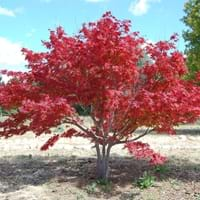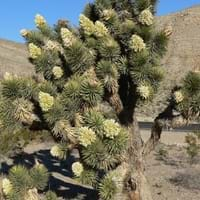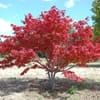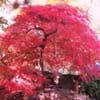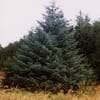Life Span
Perennial
Perennial
Type
Shrub
Cactus or Succulent, Tree
Origin
Eastern Asia, China, Japan, Korea
Southwestern United States, Mexico
Types
Not Available
Not Available
Habitat
gardens, Woodland Garden Secondary, Woodlands
Desert, Dry areas, Rocky areas, Sandy areas
USDA Hardiness Zone
4-7
6-10
Sunset Zone
A3, 2a, 2b, 3a, 3b, 4, 5, 6, 7, 8, 9, 10, 12, 14, 15, 16, 17, 18, 19, 20, 21, 22, 23, 24
9, 10, 11, 12, 13, 14, 15, 16, 18, 19, 20, 21, 22, 23
Habit
Oval or Rounded
Upright/Erect
Flower Color
Red
White, Ivory
Flower Color Modifier
Not Available
Not Available
Fruit Color
Red, Brown
Light Green
Leaf Color in Spring
Red, Burgundy, Dark Red, Copper
Gray Green, Dark Green
Leaf Color in Summer
Red, Green, Bronze
Gray Green, Dark Green
Leaf Color in Fall
Red, Crimson, Orange Red
Gray Green, Dark Green
Leaf Color in Winter
Not Available
Olive, Gray Green, Dark Green
Leaf Shape
Palmate
Linear
Plant Season
Spring, Summer, Fall, Winter
Spring, Summer, Fall, Winter
Sunlight
Partial Sun, Partial shade
Full Sun
Growth Rate
Slow
Very Slow
Type of Soil
Clay, Loam, Sand
Loam, Sand
The pH of Soil
Acidic, Neutral
Acidic, Neutral, Alkaline
Soil Drainage
Average
Well drained
Bloom Time
Early Spring, Spring, Late Spring, Early Summer
Early Spring, Spring, Late Winter
Tolerances
Not Available
Drought
Where to Plant?
Ground
Ground
How to Plant?
Budding, Seedlings, Stem Cutting
Leaf Cutting, Stem Cutting
Plant Maintenance
Medium
Medium
Watering Requirements
Average Water Needs, Needs less watering
Allow soil to be completely dry in between waterings, Do not water frequently
In Summer
Lots of watering
Lots of watering
In Spring
Moderate
Moderate
In Winter
Average Water
Average Water
Soil pH
Acidic, Neutral
Acidic, Neutral, Alkaline
Soil Type
Loam, Sand
Loam, Sand
Soil Drainage Capacity
Average
Well drained
Sun Exposure
Full Sun, Partial Sun, Partial shade
Full Sun
Pruning
Remove damaged leaves, Remove dead branches, Remove dead leaves
Remove damaged leaves, Remove dead branches, Remove dead leaves
Fertilizers
All-Purpose Liquid Fertilizer, Apply N-P-K, since leafy plants, use higher nitrogen content fertilizer
All-Purpose Liquid Fertilizer, No fertilizers needed
Pests and Diseases
Aphids, Beetles, Mealybugs, Red blotch, Scale, Sooty Mold
Brown Spots, Red blotch
Plant Tolerance
Drought, Full Sun, Shade areas
Drought, Dry Conditions, Dry soil, Heat Tolerance, Rocky Soil, Sun
Flowers
Insignificant
Showy
Flower Petal Number
Single
Single
Foliage Texture
Fine
Bold
Foliage Sheen
Matte
Matte
Attracts
Not Available
Not Available
Allergy
Not Available
Not Available
Aesthetic Uses
Bonsai, Borders
Decorating walls
Beauty Benefits
Not Available
Not Available
Environmental Uses
Air purification
Air purification
Medicinal Uses
Not Available
Not Available
Part of Plant Used
Sap
Not Available
Other Uses
Used as preservative
Not Available
Used As Indoor Plant
No
No
Used As Outdoor Plant
Yes
Yes
Garden Design
Feature Plant, Foundation, Mixed Border
Feature Plant, Rock Garden, Wall
Botanical Name
ACER palmatum 'Skeeter's Broom'
YUCCA brevifolia
Common Name
Downy Japanese Maple, Fullmoon Maple, Japanese Maple
yucca palm
tree yucca
palm tree yucca
In Hindi
Japanese Maple
Joshua Tree
In German
japanischer Ahorn
Joshua Tree
In French
érable du Japon
Joshua Tree
In Spanish
arce japonés
Árbol de Joshua
In Greek
Japanese Maple
Joshua Tree
In Portuguese
bordo japonês
Joshua Tree
In Polish
Klon japoński
Joshua Tree
In Latin
Acer palmatum
Joshua ligno
Phylum
Tracheophyta
Tracheophyta
Class
Magnoliopsida
Magnoliopsida
Order
Sapindales
Asparagales
Family
Aceraceae
Agavaceae
Clade
Angiosperms, Eudicots, Rosids
Angiosperms, Monocots
Tribe
Not Available
Not Available
Subfamily
Not Available
Not Available
Number of Species
Not Available
Importance of Japanese Maple and Joshua Tree
Want to have the most appropriate plant for your garden? You might want to know the importance of Japanese Maple and Joshua Tree. Basically, these two plants vary in many aspects. Compare Japanese Maple and Joshua Tree as they differ in many characteristics such as their life, care, benefits, facts, etc. Every gardener must at least have the slightest clue about the plants he wants to plant in his garden. Compare their benefits, which differ in many ways like facts and uses. The medicinal use of Japanese Maple is Not Available whereas of Joshua Tree is Not Available. Japanese Maple has beauty benefits as follows: Not Available while Joshua Tree has beauty benefits as follows: Not Available.
Compare Facts of Japanese Maple vs Joshua Tree
How to choose the best garden plant for your garden depending upon its facts? Here garden plant comparison will help you to solve this query. Compare the facts of Japanese Maple vs Joshua Tree and know which one to choose. As garden plants have benefits and other uses, allergy is also a major drawback of plants for some people. Allergic reactions of Japanese Maple are Not Available whereas of Joshua Tree have Not Available respectively. Having a fruit bearing plant in your garden can be a plus point of your garden. Japanese Maple has no showy fruits and Joshua Tree has showy fruits. Also Japanese Maple is not flowering and Joshua Tree is not flowering . You can compare Japanese Maple and Joshua Tree facts and facts of other plants too.
